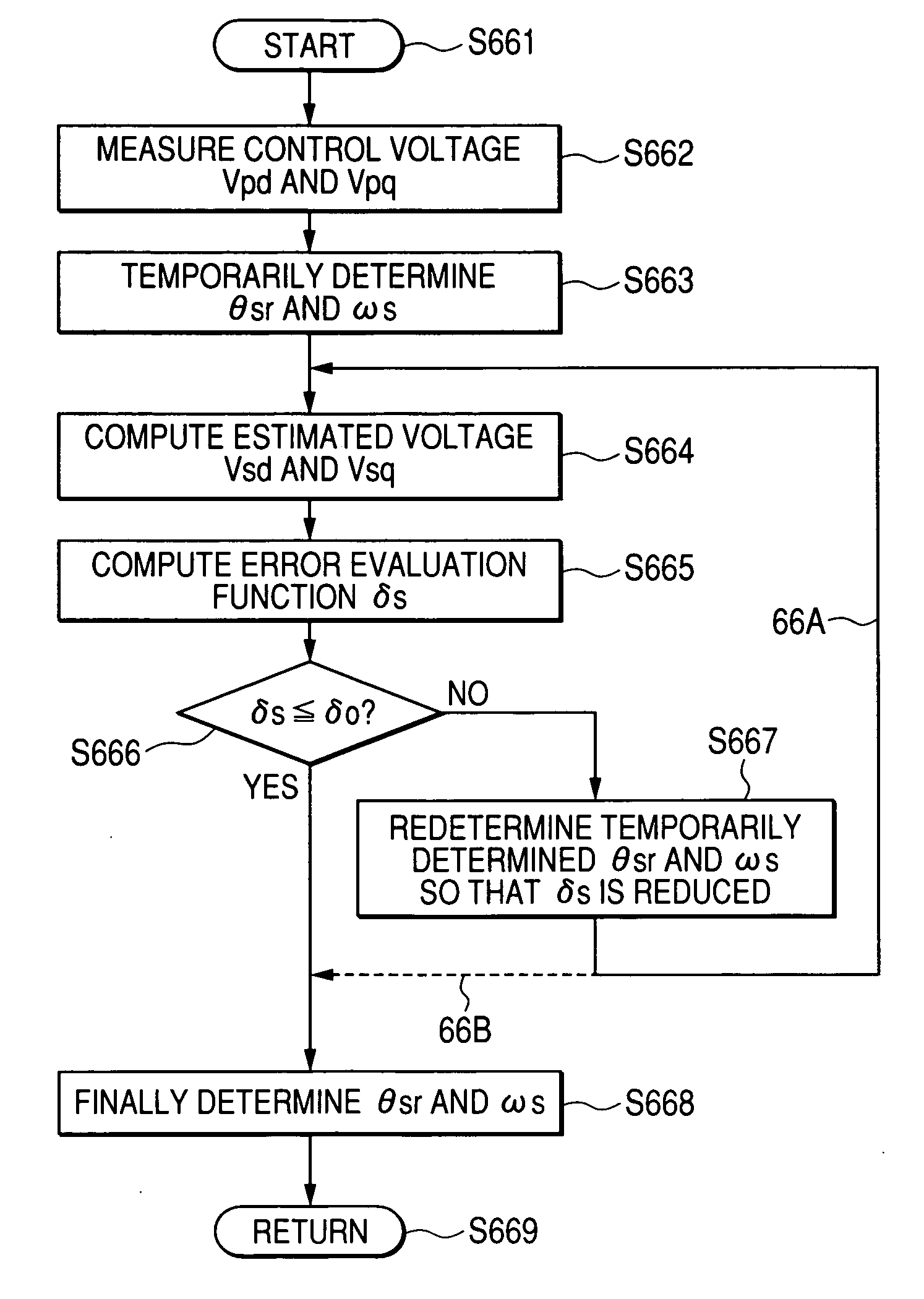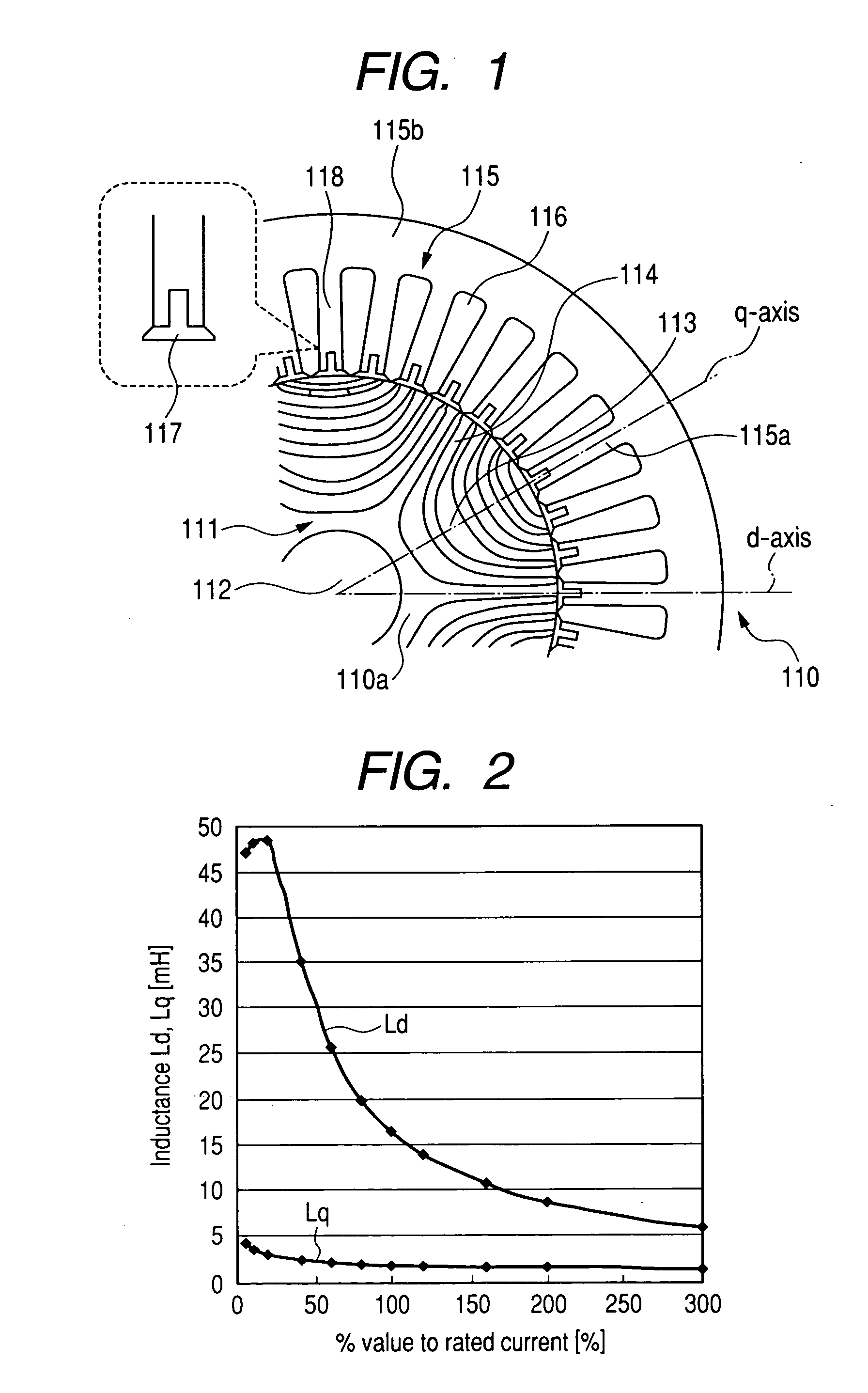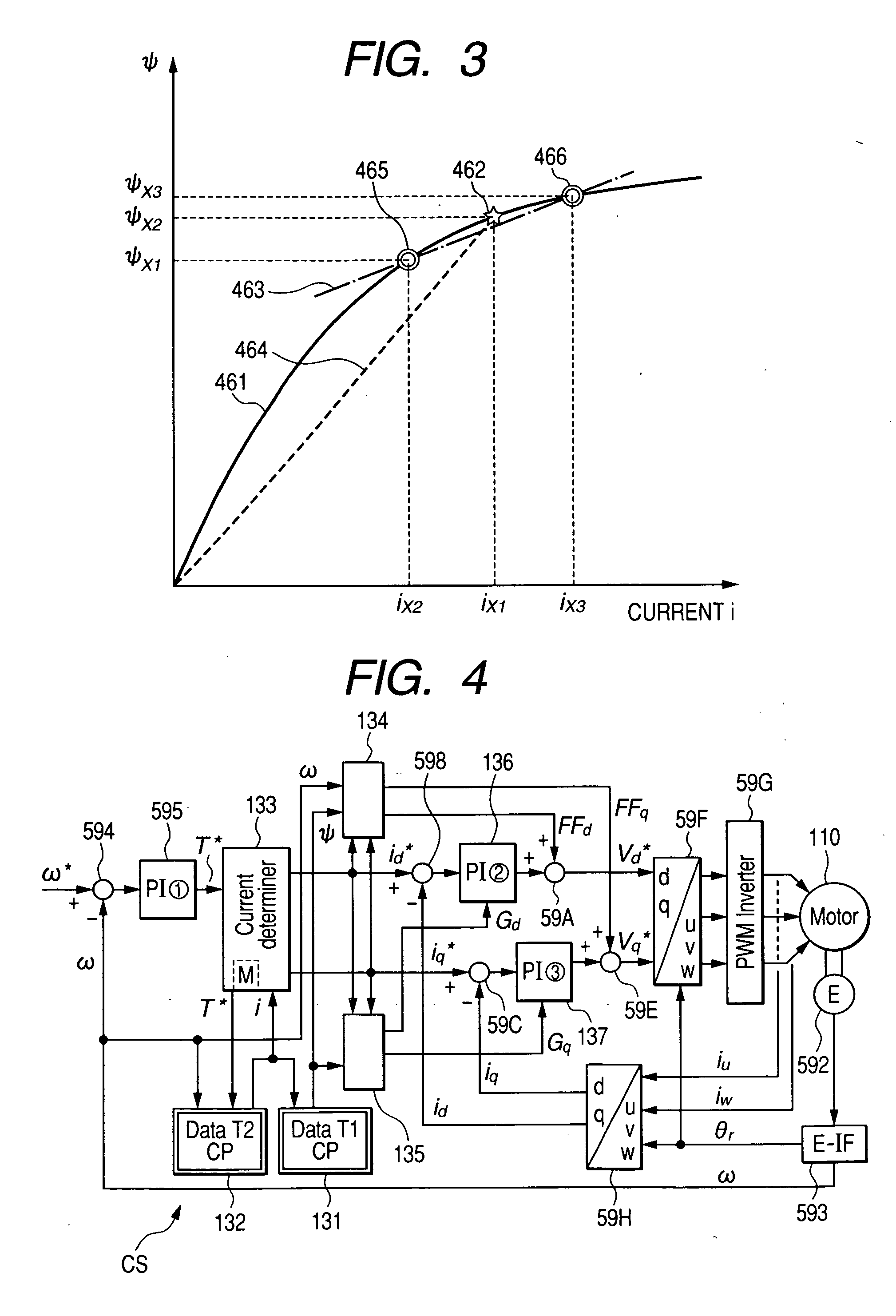System and method for controlling motor using parameter associated with magnetic flux
a technology of magnetic flux and motor, which is applied in the direction of motor/generator/converter stopper, electronic commutator control, dynamo-electric converter control, etc., can solve the problems of difficult motor control, association with motor output, and characteristic curve of motor with respect to armature current not represented as ideally linear curves, so as to achieve the effect of reliably grasping the rotational position of the rotor
- Summary
- Abstract
- Description
- Claims
- Application Information
AI Technical Summary
Benefits of technology
Problems solved by technology
Method used
Image
Examples
first embodiment
[0143]Referring to the drawings, in which like reference characters refer to like parts in several figures, particularly to FIG. 1, there is illustrated a three-phase and 36-slot synchronous reluctance motor, referred to simply as “motor”110 with six poles.
[0144]The motor 110 is provided with a salient rotor 111 defined as a multi flux-barrier rotor.
[0145]Specifically, the rotor 111 consists of a substantially annular shaped rotor core 111a, a rotor shaft 112 fixed to the inner periphery of the rotor core 111a, and a plurality of groups of flux barriers (slits) 113 formed in the rotor core 111a.
[0146]The rotor core 111a has an external diameter of, for example, 100 mm, and comprises a plurality of magnetic steel sheets and a plurality of non-magnetic stainless sheets each of which has a substantially same annular shape. The magnetic steel sheets and the stainless sheets are so laminated in their axial directions in one stainless sheet in every twenty magnetic steel sheets as to be ...
second embodiment
[0694]Next, how to apply the present invention to sensorless (encoder-less) motor control for sensorlessly detect the rotational position of the rotor and the angular velocity thereof will be described hereinafter as a second embodiment of the present invention. Like elements (blocks) between the control system CS and a control system CS1 illustrated in FIG. 28, to which like reference characters are assigned, are omitted or simplified in description.
[0695]In recent years, in order to reduce motor control systems in manufacturing cost and improve the reliability thereof, various types of sensorless (encoder-less) motor control have been widely used. As well as the first embodiment, in the second embodiment of the present invention, proper state parameters representing the behavior of a target motor have been generated to be stored in the data tables T1 and T2 of the control system CS1. Specifically, the control system CS1 is configured to detect the rotational position of the rotor ...
PUM
 Login to View More
Login to View More Abstract
Description
Claims
Application Information
 Login to View More
Login to View More - R&D
- Intellectual Property
- Life Sciences
- Materials
- Tech Scout
- Unparalleled Data Quality
- Higher Quality Content
- 60% Fewer Hallucinations
Browse by: Latest US Patents, China's latest patents, Technical Efficacy Thesaurus, Application Domain, Technology Topic, Popular Technical Reports.
© 2025 PatSnap. All rights reserved.Legal|Privacy policy|Modern Slavery Act Transparency Statement|Sitemap|About US| Contact US: help@patsnap.com



